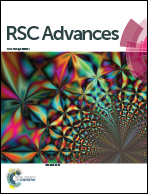Formation of orthorhombic SnO2 originated from lattice distortion by Mn-doped tetragonal SnO2
Abstract
Tin dioxide (SnO2) is an n-type semiconductor material with a tetragonal rutile crystal structure under normal conditions and displays many interesting physical and chemical properties. Another form of SnO2 with an orthorhombic crystal structure is known to be stable only at high pressures and temperatures. However, there are limited reports on the effects of Mn-doped tetragonal phase SnO2 on micro/nanostructured characteristics. In this article, micro/nanostructures of Mn-doped tetragonal phase SnO2 have been successfully prepared by the chemical co-precipitation method. The micro/nanostructural evolution of Mn-doped tetragonal phase SnO2 under different heat treatment temperatures is evaluated by X-ray diffraction (XRD) and high-resolution transmission electron microscopy. It is surprisingly found that the orthorhombic phase SnO2 is formed in Mn-doped tetragonal phase SnO2. The obvious diffraction peaks and clear lattice fringes confirmed that the orthorhombic phase SnO2 nanocrystals exist in Mn-doped SnO2 samples. Experimental results indicated that the XRD peak intensities and crystal planes of the orthorhombic phase SnO2 decrease with increasing heat treatment temperatures. The formation of orthorhombic phase SnO2 is attributed to the lattice distortion of tetragonal phase SnO2 due to the Mn-doped tetragonal phase SnO2.


 Please wait while we load your content...
Please wait while we load your content...